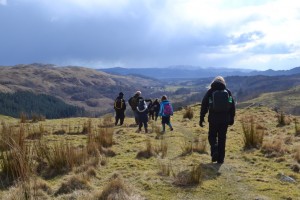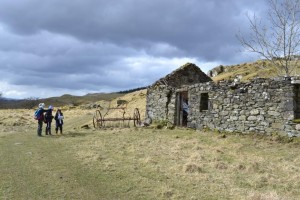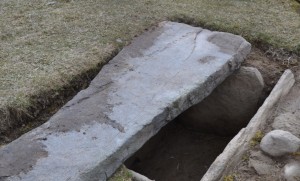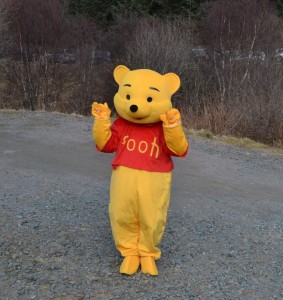
Since my last blog it has been a busy few weeks; I have been off to training, assisting with classes and busy planning my upcoming events. Each week I continue to find out more about the glen and how people have lived in and around Kilmartin for 5000 years. This continual upturning of information continues to feed my imagination, creating new stories and angles to examine natural and human history.
I was particularly struck by the how much of an interest local schools have in their ancient history. I have been working with Kilmartin Primary to explore the historic aspects of the glen (with a little bit of natural history too). The first port of call was the linear cemetery that runs through the glen and sits conveniently beside the school. These ancient monuments have been reused over the centuries and no one really knows why they follow a straight line. Archaeologists believe that the line is significant and that in the past important members of the society may have been buried here. During the trip the children explored the cairns and hypothesised about their meanings and their relationship with the environment.
A further trip with the school introduced me to the Northern tip of the glen and Carnasserie. This was home to an abandoned castle but more interestingly were the ruins of an abandoned village that lay a little further up the farm track. Here the children had the opportunity to try out their scientific skills. Measuring the buildings and examining their features to identify what the house might have been used for and how its usage may have changed.
Then the fun really began with a hike up the glen to discover some very special archaeology. On Top of one of the hills a small cist had been excavated and this one is special because it has been cut into the bedrock of the hill. A cist is essentially a small stone box that has been fashioned to line a grave and is sealed with a large stone placed over the top. Upon excavation the chamber was found to be empty, sadly everything had decomposed. However, the presence of such a burial in bedrock completely changes our perception of where a cist burial can be – they could be anywhere, not just located in soft soils. We partially replaced the stone cap to allow future visitors to get a peep inside the grave but also to protect wildlife from falling in. It made me wonder exactly how they transported these stones up the hill in the first place as they were extremely heavy – it took four adults and a leaver for us to move the slab 5ft!
On Easter Monday I assisted with the forestry commissions Kilmartin’s Easter celebrations. However, this did not quite go to plan as Winnie-the-Pooh had had an accident the day before they were short a volunteer and I was the nominated replacement. On the plus side it was a very cold day and I was lovely and toasty dressed up and greeting all the families who attended!
This week marks the first in my events and we are having a bog safari on the Moine Mhor. Exploration, crafts and close encounters with watery beasties await…..




